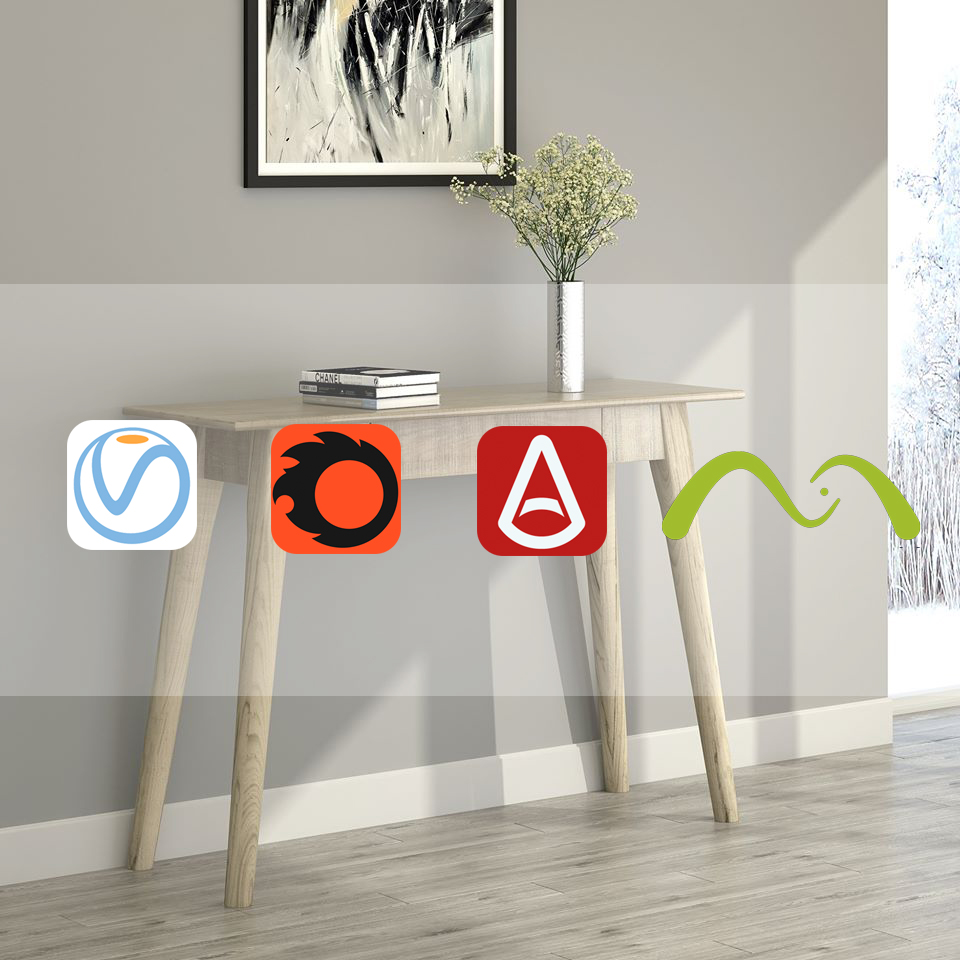There are many efficient rendering and modeling software. If you’re unsure about which one to choose, here’s a look at some popular software favored by architects and designers.
1. V-Ray
Developed by Chaos Group, V-Ray is widely considered one of the best render engines due to its speed and exceptional quality. Many users praise its extensive library of textures and materials, alongside its fast rendering times.
While V-Ray offers a vast and flexible system, it can be complex for beginners. Fortunately, there’s a wealth of online tutorials and resources available.
Another significant advantage of V-Ray is its ability to simulate extremely realistic results. If you want your work to closely resemble real life, capturing textures, lighting, shadows, and colors accurately, this is an excellent choice.
2. Corona
Corona is known for its user-friendliness compared to other rendering software available. Its settings are streamlined and compact, reducing the learning curve for new users.
Corona offers realistic simulation capabilities and a wide range of resources, comparable to V-Ray. It provides excellent options for lighting, environment, and materials, along with a library of free, high-quality textures, which are appreciated by many architects and designers.
LightMix is a unique feature of Corona that allows users to adjust the intensity and color of light, as well as the material, at different times of the day with just a few steps. This has made the process much easier.
3. Maxwell
Although some users initially perceive Maxwell as not as powerful or flexible as other software, the experience often changes their minds, as they discover its benefits.
Maxwell incorporates an exceptional lighting engine known as ‘unbiased rendering.’ It provides accurate results, using pre-installed technology simulation. This means that when using Maxwell, you’ll find real-world measurement units for material and light properties, such as watts and the refractive index. While this method yields great visual results, it also requires users to understand some basic physics and optics to be able to use the software effectively.
A notable feature of Maxwell is Multlight, which allows you to change parameters during and after rendering, including camera parameters and alterations in color and intensity. This gives you the freedom to fine-tune lighting, achieve different color schemes, or easily switch scenes from day to night.
Even though it might not be known for its speed however, Maxwell is still a rendering software with interesting features, perfect realistic simulation, easy to use and excellent output quality.
4. Arnold
Arnold is a CPU-based renderer developed for VFX studio Sony Pictures Imageworks, later acquired by Autodesk and integrated as a pre-installed renderer in 3ds Max and Maya. However, it’s compatible with many other 3D software packages.
As one of the most popular 3D rendering software solutions in the visual effects industry, Arnold uses “Monte Carlo path tracing,” a rendering technique that uses global illumination and surface reflections to create images that are indistinguishable from photographs.
Many users favor Arnold for its ability to handle complex assets without errors, its quality output, and its reasonable rendering time.
